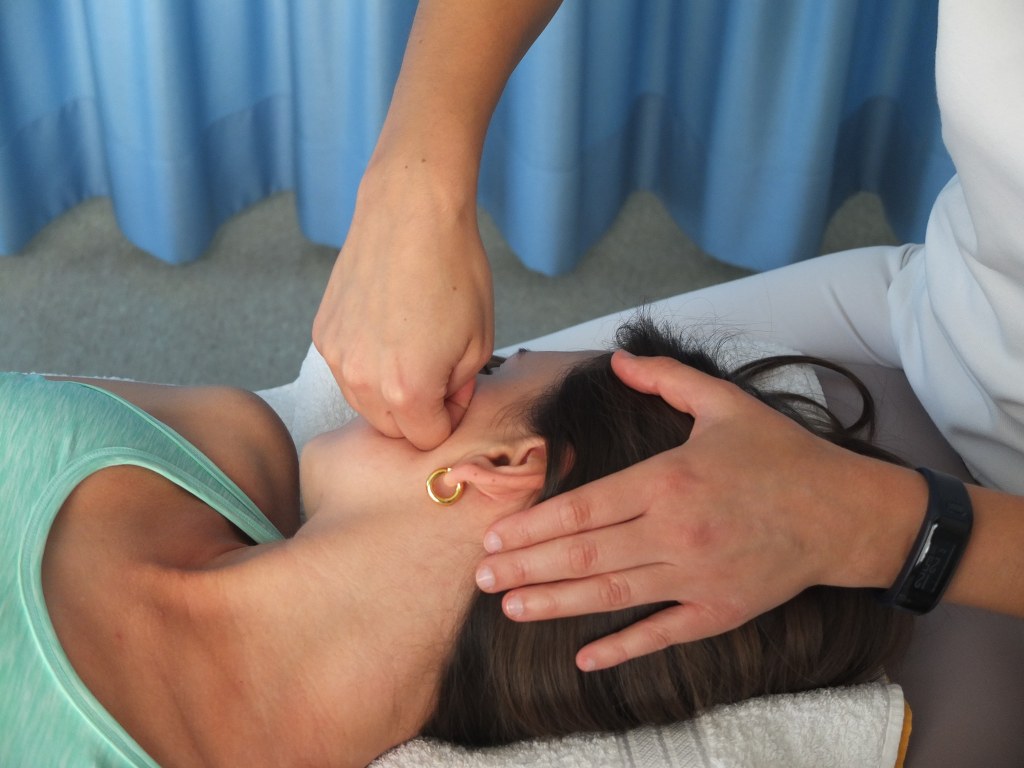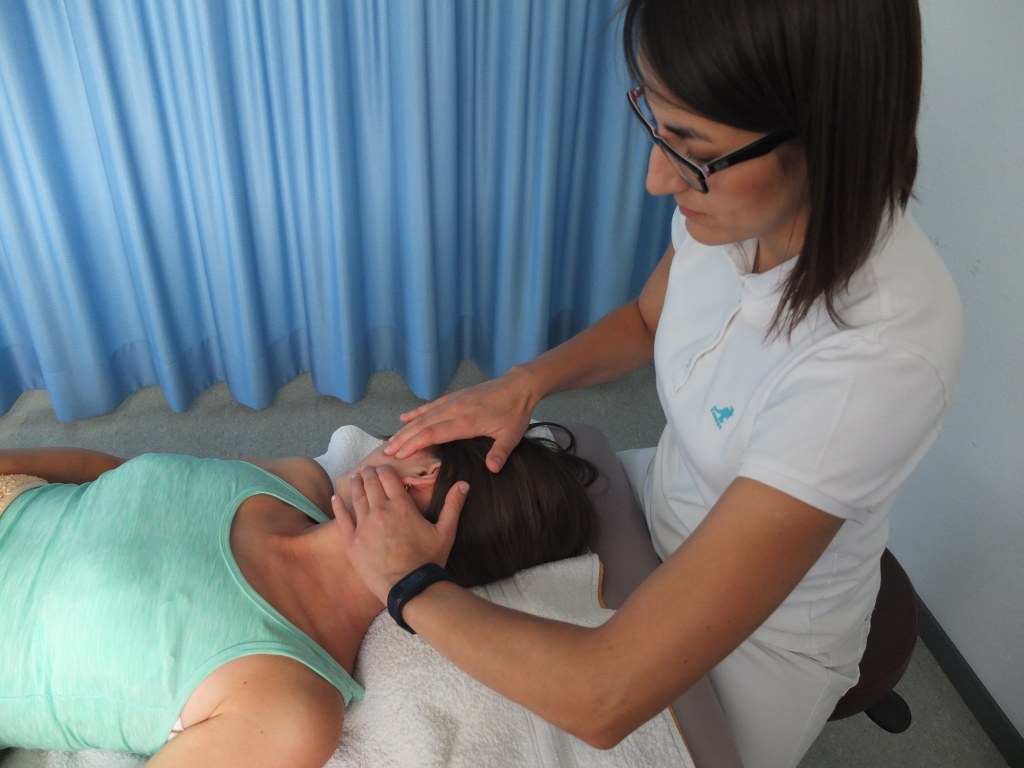Craniomandibular Disfunction (CMD)
![]()
The craniomandibular system (CMS) consists of the teeth, maxillofacial and mandible bones, temporomandibular joints (TMJ), and their structural elements like masticatory muscles, ligaments, as well as the tongue. These structures are also defined as the chewing apparatus or masticatory system.
Physiological functions of mandibular joints are the movements of the mandible bone forwards, backwards, up, down, and to the side – chewing. These activities are performed tousands of times a day when we eat, bite, chew, swallow, yawn, talk, or express emotions.
Sooner or later 20-40% of the population between the age of 20-40 have symptoms of masticatory system dysfunction. Craniomandibular disfunctions (CMD) occur when at least one element of the massatory system is impaired.
In most cases CMD patients complain of:
- mastication muscle and joint pain
- headache and neck pain
- earaches or tinnitus
- noises in the jaw joints while opening and closing the mouth
- inconvenient occlusion
- pain by chewing hard food
- tear production and pain in the inner corner of the eye
- uncontrollable side movements of the jaws
- dizziness
- visiual disturbances
- noticeable and visible position differences between the maxilla and mandible bone
- dislocation of the mandible bone
The causes of the masticatory system structure malfunction can be split into two categoreis:
- pathologies that occur directly in the masticatory system:
- bad habits like gnashing teeth, biting teeth together, poor posture of the body
- missing teeth
- untreated caries
- malocclusion
- injuries like car accidents, impact to the back of the head, chin, or face
- bone loss (osteoporosis)
- hypermobility of macticatory muscles
- as a consequence of un- or poorly-treated disfunctions or pathologies
- hyperlordosis of the neck
- head protrusion
- malfunctions in pelvic area
It is very important to know that every dysfunction of CMS that is not treated causes malfunctions in another parts of the body which become more complicated over time. Possible dysfunctions can occur in the form of local mandibular pain that can be developed through muscle chains and fascia other regions like the neck, thoracic spine, ribs, lower back, limbs, or even organs.
Therapy:
The patient’s examination is carried out starting from anamnesis, clinical functional analysis, and palpation. To work efficiently the greatest attention is paid to the effective, coordinated, and holistic work of the whole medical team: physical therapists, dentists, psychologists, and of course the patient themself. The medical team’s main duty is to restore centric jaw relation through finding the real root of patients malfunction.
The pain will be reduced and range of motion (ROM) in mandibular joint improved. The major role of the tretment process is to return the physiological movement patterns, profile, and body position as well as the balance of the fascia and muscle tissue through the relaxation of overtensed muscles and strengthingin of the weak ones.
Therapy forms to handle CMD:
- Fascial Manipulation
- Massage
- Trigger point therapy
- Kinesiotape
- Manual therapy
- Movement therapy
- Physical therapy
- Education
- Bad posture correction
- Education about bad habits
CMD therapy is not a massage of the painful area but a holistic and individualistic therapy that is individually customized to the patient’s complaints. The whole plan of therapy will be discussed with the patient during their first session.


